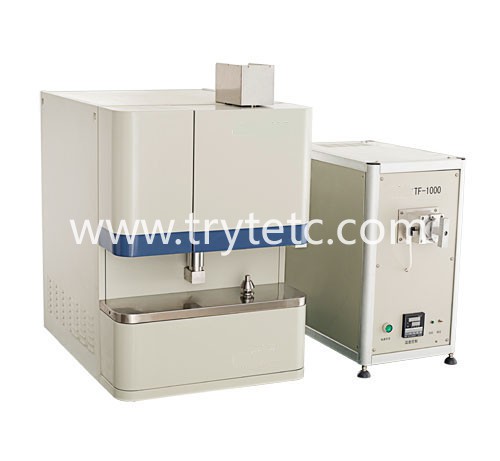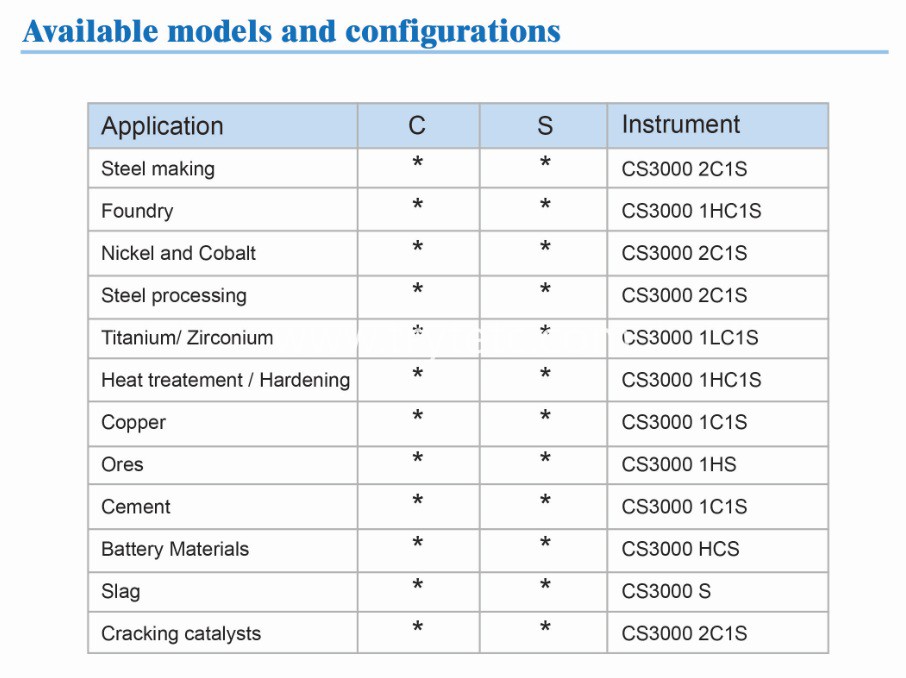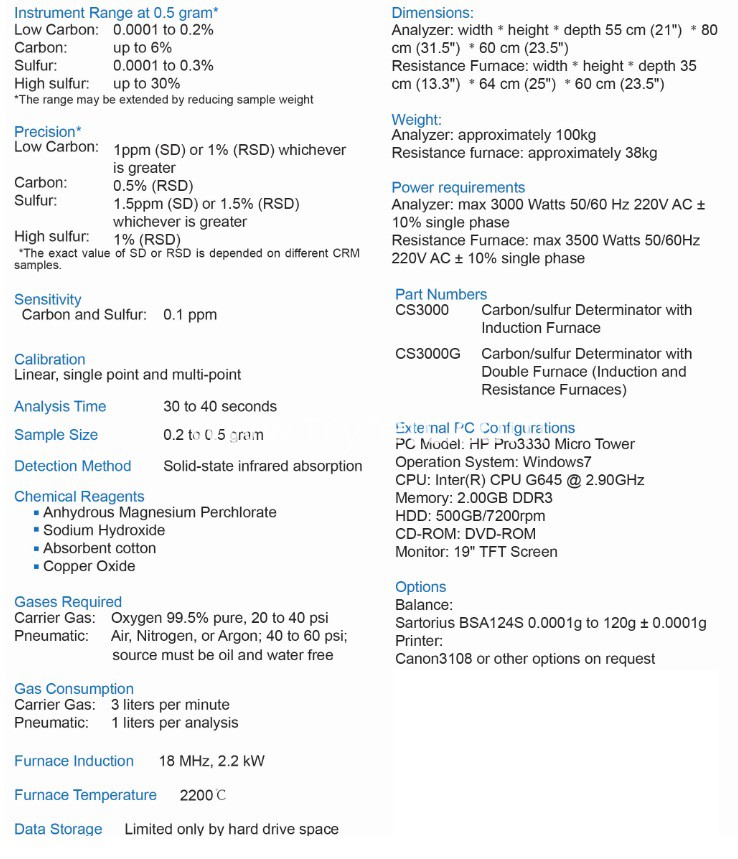
A sample of typically 0.5 to 1.0g is weight into a crucible together with 1.5g of tungsten accelerator. This crucible is placed on a pedestal which drives it into an induction furnace by a pneumatic system. The sample is completely burned in the furnace by pure Oxygen.The Carbon of this sample is oxidized to CO2 and the Sulphur content to SO2. Dust and other particles are trapped in a filter system.The CO2 and SO2 is transported from the furnace in the Oxygen carrier gas to the infrared adsorption detectors.The actual gas concentrations are determined and the data are send to the PC.The operation software is calculating the results after integration of the whole signal peaks. A calibration with known samples builds up a database which created the necessary accuracy and precision. The burned crucible is driven out of the furnace by the pneumatic system and disposed by an operator. The furnace and gas flow system is purged after analysis by clean Oxygen to avoid any interference (memory effect) of the individual samples.
The induction furnace ensures a fast and complete combustion at temperatures of about 2200┬░C. ItŌĆÖs robust design ensures a long lifetime and minimized maintenance. With 18.5 MHz and 2.2 kVA its a suitable furnace for the combustion of a wide range of materials.
The unique design reduces a splattern and the dust from the combustion is trapped in an easy to clean metal filter.
The specialty for this application developed IR detector with up to 4 independent absorption units ensures the needed wide analytical range with high precision.The reliable design is known for long term stability and very low maintenance.
High tech detectors and interference filters are the base for a long time stability of the calibration. A build in temperature controller makes the detector system independent from the environmental conditions.




